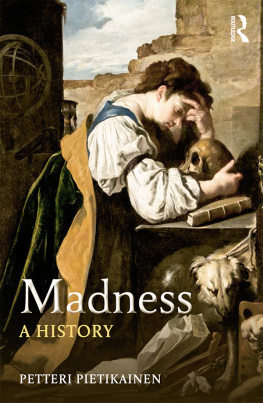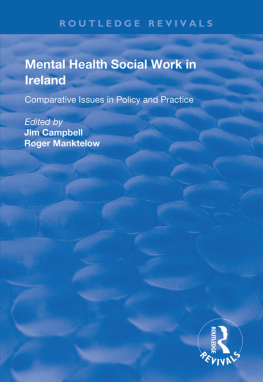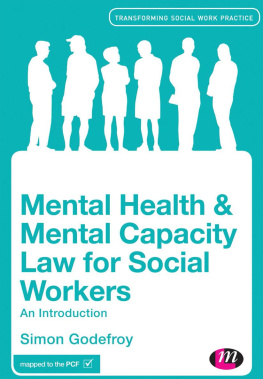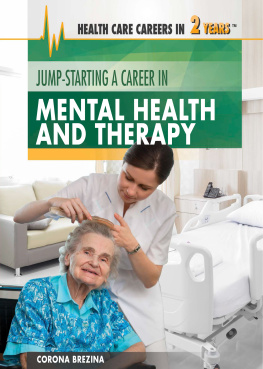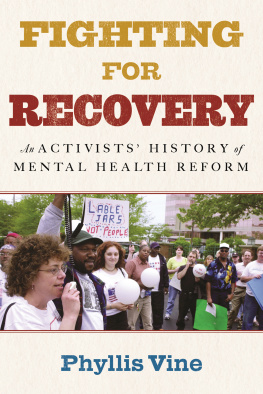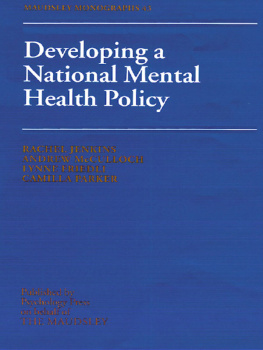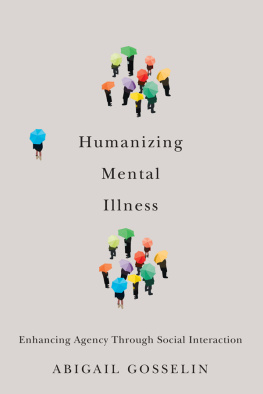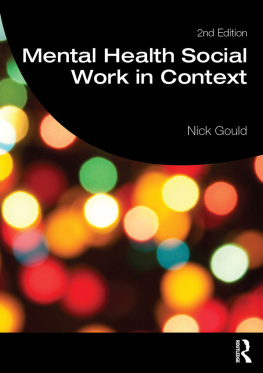Social Class and Mental Illness in Northern Europe
This book examines the relationship between social class and mental illness in Northern Europe during the 20th century. Contributors explore the socioeconomic status of mental patients, the possible influence of social class on the diagnoses and treatment they received in psychiatric institutions, and how social class affected the ways in which the problems of minorities, children, and various deviants and misfits were evaluated and managed by mental health professionals. The basic message of the book is that, even in developing welfare states founded on social equality, social class has been a significant factor that has affected mental health in many different ways and still does.
Petteri Pietikinen is Professor of the History of Science and Ideas at the University of Oulu, Finland.
Jesper Vaczy Kragh is principle investigator at Psychiatry Region Zealand and a Fellow at CoRe, the University of Copenhagen, Denmark.
Routledge Studies in the History of Science, Technology, and Medicine
34Health Policies in Transnational Perspective
Europe in the Interwar Years
Josep-Llus Barona-Vilar
35Urban Histories of Science
Making Knowledge in the City, 18201940
Edited by Oliver Hochadel and Agust Nieto-Galan
36Pioneering Health in London, 19352000
The Peckham Experiment
David Kuchenbuch
37Soviet Science and Engineering in the Shadow of the Cold War
Hiroshi Ichikawa
38Cold Science
Environmental Knowledge in the North American Arctic During the Cold War
Stephen Bocking and Daniel Heidt
39Medical Memories and Experiences in Postwar East Germany
Treatments of the Past
Markus Wahl
40Politics, Statistics, and Weather Forecasting, 18401910
Taming the Weather
Aitor Anduaga
41Social Class and Mental Illness in Northern Europe
Edited by Petteri Pietikinen and Jesper Vaczy Kragh
For the full list of titles in the series, please visit: https://www.routledge.com/Routledge-Studies-in-the-History-of-Science-Technology-and-Medicine/book-series/HISTSCI
Social Class and Mental Illness in Northern Europe
Edited by
Petteri Pietikinen and Jesper Vaczy Kragh
First published 2020
by Routledge
2 Park Square, Milton Park, Abingdon, Oxon OX14 4RN
and by Routledge
52 Vanderbilt Avenue, New York, NY 10017
Routledge is an imprint of the Taylor & Francis Group, an informa business
2020 selection and editorial matter, Petteri Pietikinen and Jesper Vaczy Kragh; individual chapters, the contributors
The right of the editors to be identified as the author of the editorial material, and of the authors for their individual chapters, has been asserted in accordance with sections 77 and 78 of the Copyright, Designs and Patents Act 1988.
All rights reserved. No part of this book may be reprinted or reproduced or utilised in any form or by any electronic, mechanical, or other means, now known or hereafter invented, including photocopying and recording, or in any information storage or retrieval system, without permission in writing from the publishers.
Trademark notice: Product or corporate names may be trademarks or registered trademarks, and are used only for identification and explanation without intent to infringe.
British Library Cataloguing-in-Publication Data
A catalogue record for this book is available from the British Library
Library of Congress Cataloging-in-Publication Data
Names: Pietikinen, Petteri, editor. | Kragh, Jesper Vaczy, editor.
Title: Social class and mental illness in Northern Europe / edited by
Petteri Pietikinen and Jesper Vaczy Kragh.
Description: 1 Edition. | New York : Routledge, 2020. | Includes
bibliographical references and index. |
Summary: This book examines the relationship between social
class and mental illness in Northern Europe during the 20th
century Provided by publisher.
Identifiers: LCCN 2019026889 (print) | LCCN 2019026890 (ebook) |
ISBN 9781138361690 (hardback) | ISBN 9780429779343 (adobe pdf) |
ISBN 9780429779329 (mobi) | ISBN 9780429779336 (epub)
Subjects: LCSH: Social classesEurope, NorthernHistory20th
century. | Mental illnessEurope, NorthernHistory20th century. |
Social controlEurope, NorthernHistory20th century.
Classification: LCC HN540.A8 S573 2020 (print) |
LCC HN540.A8 (ebook) | DDC 305.50948dc23
LC record available at https://lccn.loc.gov/2019026889
LC ebook record available at https://lccn.loc.gov/2019026890
ISBN: 978-1-138-36169-0 (hbk)
ISBN: 978-0-429-43255-2 (ebk)
Typeset in Times New Roman
by codeMantra
Petteri Pietikinen and Jesper Vaczy Kragh
It is by now a well-established fact that the lower socioeconomic classes are at a greater risk of falling ill and having a shorter life span than those better off in society. Social class thus appears to be a significant variable that needs to be effectively taken into account when examining and explaining the prevalence of mental disorders in a society.
This book examines the relationship between social class and mental disorders in Northern Europe between the late 19th and late 20th centuries. During this period the number of patients confined in mental hospitals increased to the point where they were often overcrowded and understaffed by the outbreak of World War II. After this point, the numbers confined began to go down as a large-scale process of deinstitutionalisation began. If the period between the end of the 19th century up until the middle of the 20th century was seen as the era of great confinement, then the second half of the 20th century clearly witnessed the era of great deinstitutionalisation.
The impetus for writing this book came from the rather surprising observation that we could barely find any historical studies about Northern Europe that have made the issue of social class and mental illness their main focus. While the topic may often have been acknowledged in previous histories of madness and mental health, social class has not been the primary subject of more recent studies. Historical research on the correlations between social class and mental illness started in the late 1930s with the now classic ecological study of mental disorders in urban Chicago. Robert Faris and Warren Dunham, authors of this study, looked at the residential areas of mental patients and noticed that there were clear correlations between these areas and the quantity and quality of mental disorders. Applying the theory of social disorganisation developed by the Chicago School of Sociology, they concluded that people living in inner city zones that were assumed to be naturally disorganised were at the highest risk of suffering from schizophrenia. They also argued that social isolation, poor communication among residents, an increased concentration of immigrants, and a high turnover of residents (i.e. those moving in and out of the area) had detrimental effects on the mental health of residents in the area. Faris and Dunhams study made a lasting contribution to social psychiatry by providing an impetus for research into the relationship between mental illness and social environments on the one hand, and mental illness and social class on the other.


